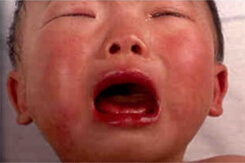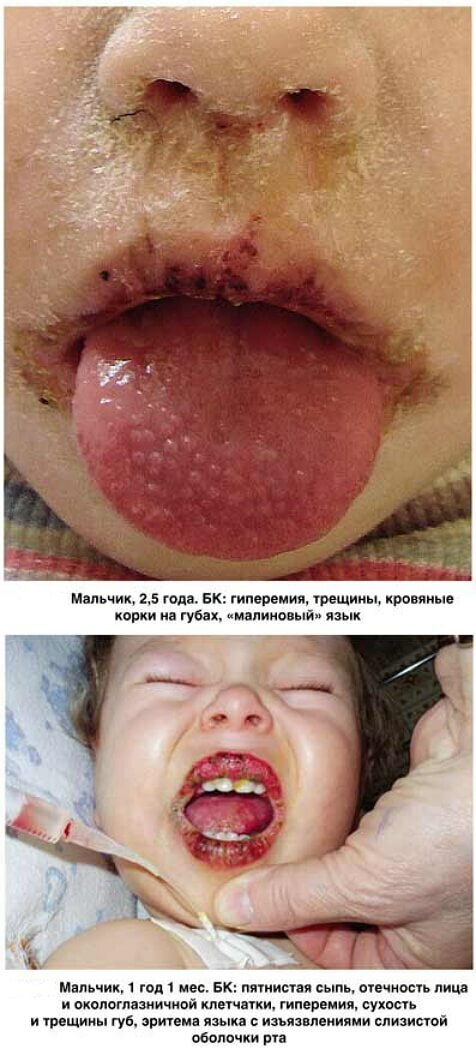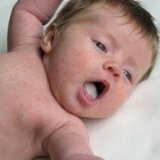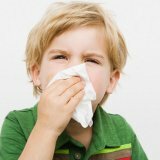Kawasaki disease
 Kawasaki disease is a fairly rare disease, mainly observed in preschool children and manifested by inflammation of the blood vessels in various tissues and organs of the body. The reliable cause of the development of this disease is unknown, but among the causes that are supposedly causing the development of the disease, special attention is paid to the retrovirus. Despite the fact that most children after Kawasaki's disease completely recover, sometimes such severe consequences as mechanical jaundice and heart failure developed due to heart failure are sometimes observed.
Kawasaki disease is a fairly rare disease, mainly observed in preschool children and manifested by inflammation of the blood vessels in various tissues and organs of the body. The reliable cause of the development of this disease is unknown, but among the causes that are supposedly causing the development of the disease, special attention is paid to the retrovirus. Despite the fact that most children after Kawasaki's disease completely recover, sometimes such severe consequences as mechanical jaundice and heart failure developed due to heart failure are sometimes observed.
Unfortunately, to date, it is not known for certain what causes Kawasaki's disease. Nevertheless, most doctors are confident in its infectious nature and determine the place given to the retrovirus, due to the fact that the disease develops suddenly and affects only children with weakened immunity. However, apparently, there are other factors contributing to the development of the disease. For example, in Japanese children, the disease is more common than in children from other countries. In addition, only isolated cases of transmission of the disease from a person to a person are recorded.
Kawasaki's disease -
risk group Kawasaki's disease affects children of preschool age in most cases, although sometimes older children suffer from this ailment. In 80% of cases, this disease is observed in children under five years old. The main risk group is children of one or two years old.
Kawasaki's disease in children in the first two years of life is much more difficult to diagnose than in older age, although it is the disease that most often causes complications in the heart.
The reason that girls less than boys are susceptible to this disease is also not yet clear. Kawasaki's disease occurs in children of any nationality and race, but ten times more common among Japanese children
Kawasaki's disease - symptoms and signs
The leading symptoms of Kawasaki's disease are as follows:
- enlargement of the cervical lymph nodes( more often unilateral)
- Hyperemic chapped lips, Edematous red-scarlet tongue
- Appears on any part of the body polymorphous skin rash
- On the soles and palms of the body from about the third week of the disease there are changes in thea seal with reddened scaly skin
- do not fall off more than five days of fever
- Conjunctivitis 
Less common symptoms of Kawasaki disease include abdominal pain and joint pain, vomiting, diarrhea, headache, and general malaise.
Kawasaki disease is very often the cause of heart failure, so if you have the slightest suspicion of the presence of this disease urgently, you need to undergo echocardiography. Despite the fact that the majority of children with this disease have no prolonged complications, in some cases nevertheless there is an effect on the blood vessels and heart. Involvement in the pathological process of the heart can occur both in the first days of the course of the disease, and after the crisis. The inflammatory process in the heart muscle develops in the case of an acute form of the disease. Usually, no serious consequences follow, but sometimes congestive heart failure develops. Weakened by the disease, the heart muscle can no longer function as before with full load, which leads to the accumulation of fluid in the tissues and, accordingly, increasing edema.
Almost all children after Kawasaki's disease completely recover, however, approximately one in every five babies develop severe complications from the coronary vessels and heart. Vascular machines lose their elasticity and elasticity, some areas swell, leading to the formation of aneurysms( pockets).In exceptional cases, this results in the formation of blood clots, a violation of cardiac muscle nutrition and as a result - myocardial infarction develops
Diagnosis of Kawasaki disease
Due to the fact that Kawasaki's disease is very rare, most doctors have never met with her in their practice, so setting the right diagnosis is more difficult than with similar other common viral diseases. And when it comes to small children with poorly expressed symptoms, proper diagnosis is even more difficult, since especially in the smallest, the so-called atypical form of the disease is often observed, when only certain symptoms appear. In such cases, an erroneous diagnosis of respiratory viral infection is usually made.
The defining feature of the Kawasaki disease course is the temperature maintained for twelve days at an average severity of the disease, and more than twenty days in severe cases.20% of children develop coronary artery aneurysms, which leads to the development of thromboses and stenoses that damage the power of the heart muscle
Kawasaki's disease - treatment of
Even though modern medicine does not have knowledge about the true causes of Kawasaki's disease, there areSome medications that help in its treatment. The primary goal of all medical measures is to protect the cardiovascular system.
Intravenous injection of immunoglobulin was shown to be very effective( it is administered daily, the course is 5-7 days).This drug contains antibodies that increase the passive immunity of the patient and accelerate recovery.
Aspirin is an unchangeable remedy for Kawasaki's disease, which not only contributes to lowering body temperature, but also dilutes blood, preventing the formation of clots, and also has a very powerful anti-inflammatory effect. In case of coronary artery disease, aspirin is taken for a long time in small doses. Despite the fact that aspirin is not recommended for children under the age of twelve, as for Kawasaki disease, it is justified
. More articles on this topic:
1. Hyperphalasia
2. Hypotrophy
3. Treatment of pediculosis



